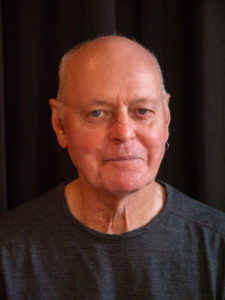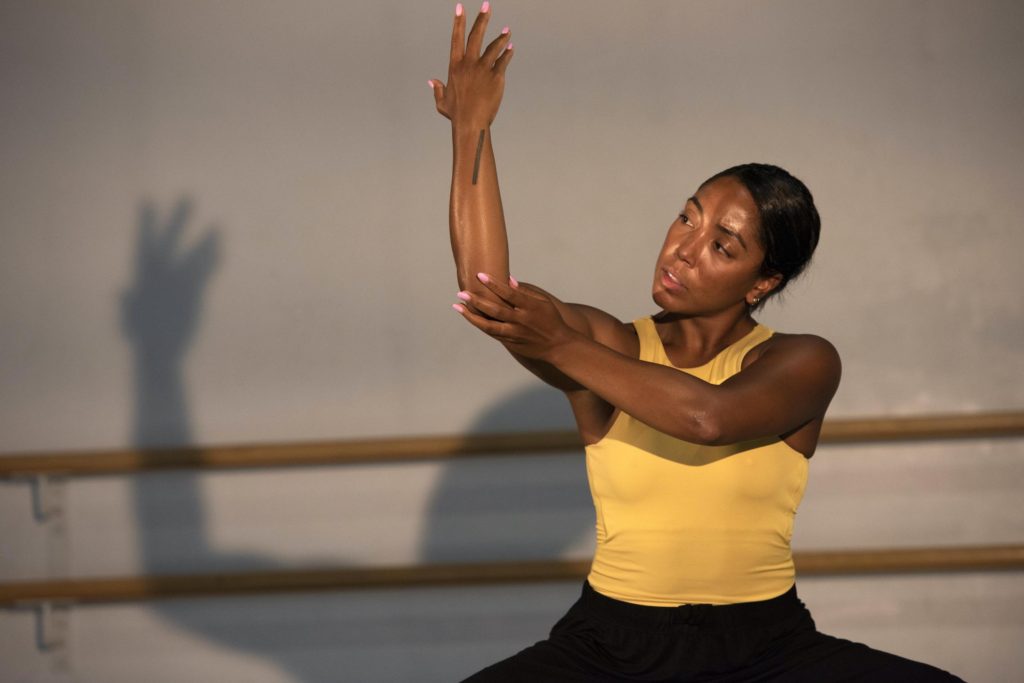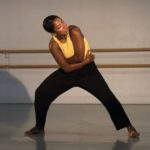Woman Walking (away) and Other Works: Vancouver dancers interpret the past - Vancouver Ballet Society
- Home
- Features 2020 - 2023
- Woman Walking (away) and Other Works: Vancouver dancers interpret the past

By Rachel Silver Maddock
In 1997, at the age of 42, Mary-Louise Albert had spent two decades dancing professionally and was ready to move on to the next stage of her life. As a final curtain call, the Vancouver dancer commissioned a series of solos from choreographers across Canada.
Three of those solos will be performed again in November, after more than 20 years, by a new generation of dancers: Vanessa Goodman, in Tedd Robinson’s (oLOS), Rebecca Margolick, in Allen Kaeja’s Trace Elements and Livona Ellis, in Peter Bingham’s Woman Walking (away).

After retiring from dance, Albert retrained in business and went on to direct the Norman Rothstein Theatre, which included running its annual Chutzpah! performing arts festival. Not long before her second retirement, from the Rothstein Theatre, she started pulling together a show to revive and pass on the three commissioned works, Solo Dances / Past into Present.
All three works were remounted before the pandemic began, with the dancers having studio time with both their choreographer and Albert, and drawing from both perspectives. According to Margolick (who is Albert’s daughter), this version of Toronto-based Kaeja’s Trace Elements is like a “reimagining” or a sequel, retaining only about half of the original solo. Goodman says that while Ottawa-based Robinson’s (oLos) retains the spirit of the original, both Albert and Robinson introduced adaptations, including a change of costume.
Bingham’s work, on the other hand, is relatively unchanged. Woman Walking (away) will read like a museum piece, brought to life by a new performer.
Woman Walking (away)
In 1997, there was a collision of styles when Albert and Bingham got into the studio together to create Woman Walking (away). Though both part of Vancouver’s contemporary dance scene, Albert comes from a balletic background, while Bingham, the artistic director of EDAM (Experimental Dance and Music), is firmly rooted in post-modern contact improvisation.
On the first day, they practiced contact improvisation as part of the creative process, and Albert remembers getting motion sickness from “all the turning around.” The two artists sat down, and began to build a gestural movement sequence, vulnerable and personal, which would become integral to the work.
In 2018, when Albert approached Livona Ellis about reviving the piece, the 27-year-old was in her own process of letting go: after eight seasons with Ballet BC, Ellis was leaving to pursue independent projects. “I was literally walking into darkness and unknown and questioning,” she recalled when we spoke after a rehearsal.

Ellis learned the choreography on her own from a video and from Albert. Though simple in concept — the work was inspired by a picture of a woman walking away, painted by Bingham’s friend — the piece requires a certain specificity from the performer. “And Livona has this range as a performer: she can be fiery and fast, and gentle, too,” says Albert.
When Ellis met with Bingham in the studio in October 2019, the two had never worked together before. “We finessed the piece, basically,” says Bingham, “taking it out of the technical realm and moving it into the expressive realm.”
After working with Bingham, Ellis is approaching the work differently. Before, she says, “I was trying to let the music drive the gestures. Now I’m working more from sensation, and allowing that to develop the timing and emotional state.”
Sensation is always “now”
During a studio run of Woman Walking (away), Ellis showed remarkable power and articulation through her arms, contracting muscles and reorganizing fingers in tandem with loud, capricious instrumental music by experimental Austrian folk group Die Knödel. At times, she seemed to be withdrawing into herself, concaving her chest and hunching her shoulders.
Though Bingham calls it one of his more “literal” works, the 10-minute piece is elusive. Sudden shifts in timing and energy point toward an internal struggle for the performer, and the final image (the narrowing spotlight on a figure walking away) offers an uncertain resolution.

“I wasn’t sure how the work would read today,” Ellis says after the run. “But I realized that when something is so clear, it stands the test of time. The ideas and the physicality of it feel very ‘now.’”
Since starting the project, its meaning has changed for her. After two years of working independently for local choreographers in Vancouver and spending time in Europe, this fall Ellis rejoined Ballet BC under new artistic director Medhi Walerski.
“I feel like I’ve gone out of my comfort zone, and realized what things I value and what structures I need in my life,” she says. “Coming back and joining Ballet BC again feels different with the new director. I feel more independent and secure as a person, with more to say in my dancing.”
Ellis relates the feeling of Woman Walking (away) to a world with COVID-19 — walking into the unknown where everything is uncertain. In her own practice, the dancer’s focus is to “just keep walking, just keep working and find out what’s there as it comes.”
Solo Dances / Past into Present, November 19-21, will be the first live performance held at Scotiabank Dance Centre in Vancouver since the pandemic hit in mid-March, with digital streaming December 3-17. Returning to the stage alongside the three revived works is Albert herself, at age 65, in a new solo by seasoned choreographer Serge Bennathan, Empreintes (Fingerprints).

